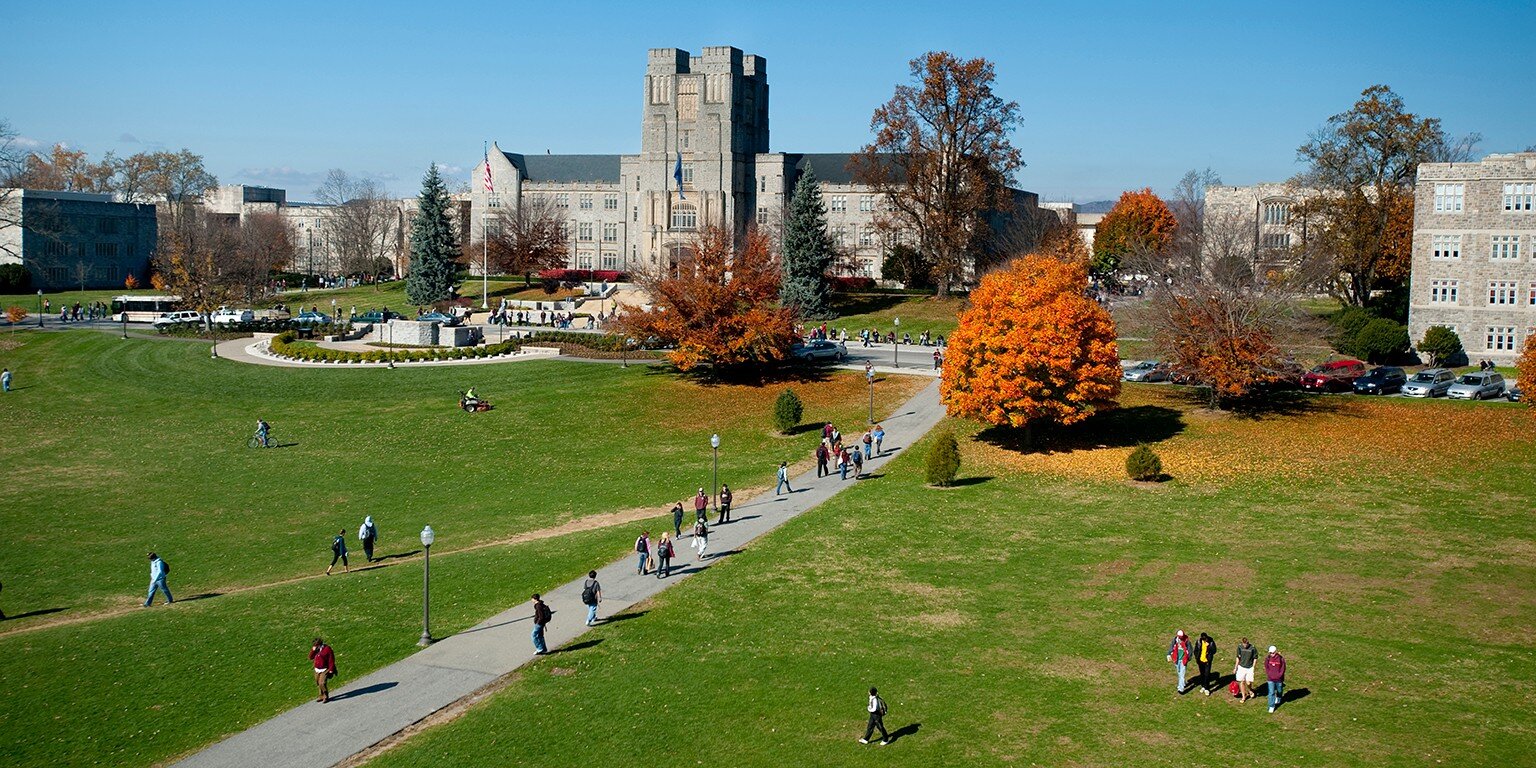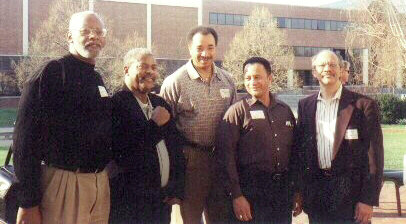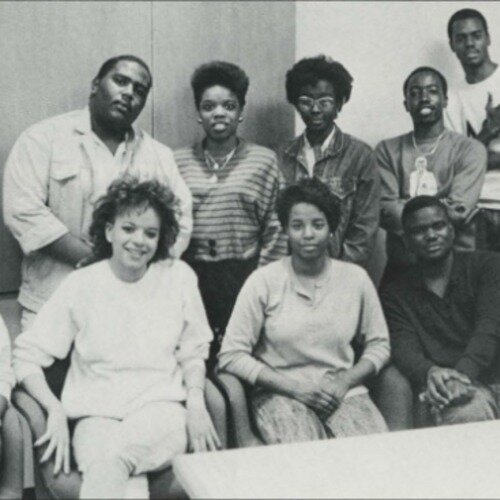
EXHIBIT
CREATING HOME
BLACK INCLUSION AND COMMUNITY BUILDING
FORGING A STUDENT COMMUNITY
The Council remained a predominantly white organization throughout the 1950s and 1960s, but as more black students began matriculating to Tech and joining the organization in the late 1960s and 1970s, more and more white students began to leave it. Not only did the Council provide black students with opportunities to socialize in a group setting, but it also offered the first opportunity for black students to participate and lead an organization that was officially recognized by the University.
Phi Groove, 1969
at a reunion in 2000
After making a pact to transfer from Virginia Tech at the conclusion of their freshman year due Virginia Tech’s celebration of Dixie and the lack of diversity on campus, James Watkins attributes the founding of Groove Phi Groove as the reason he and 7 fellow black students remaining at Tech,
In 1983, black Greek students held the first ever Overton R. Johnson Endowed Scholarship Step Competition, a stepping competition which raised scholarship funds in honor of Overton Johnson, Virginia Tech’s first black professor. This was the first institutionalized step competition on a college campus and is still held today.
chartered in 1979
This serves both as a reflection of the Universities increased enrollment of black students, as well as the need black students clearly still felt to foster communities separate from their white peers. Although black students were now at Tech in greater numbers than ever before, in terms of social interactions, Virginia Tech was still very much a segregated community.



































